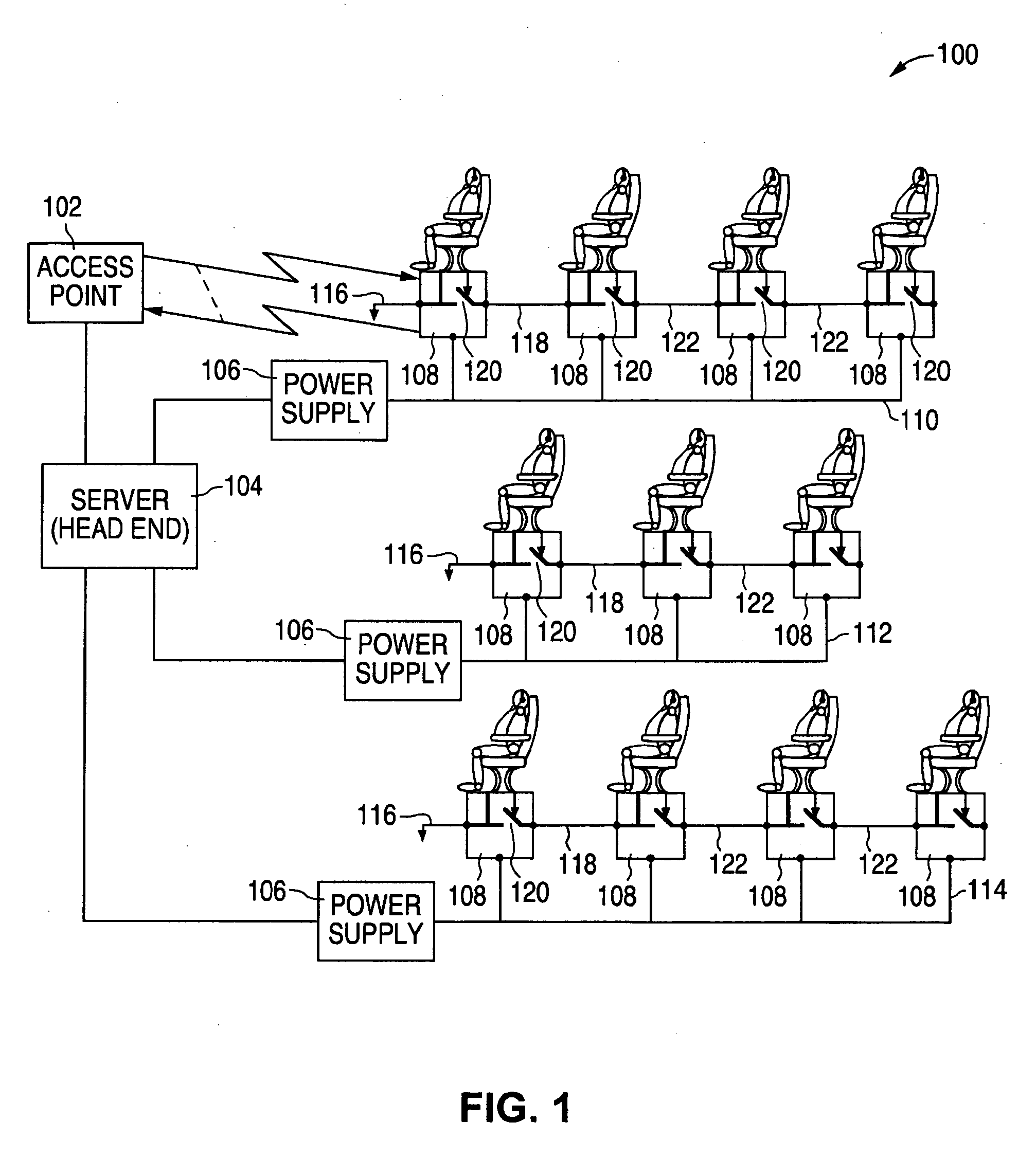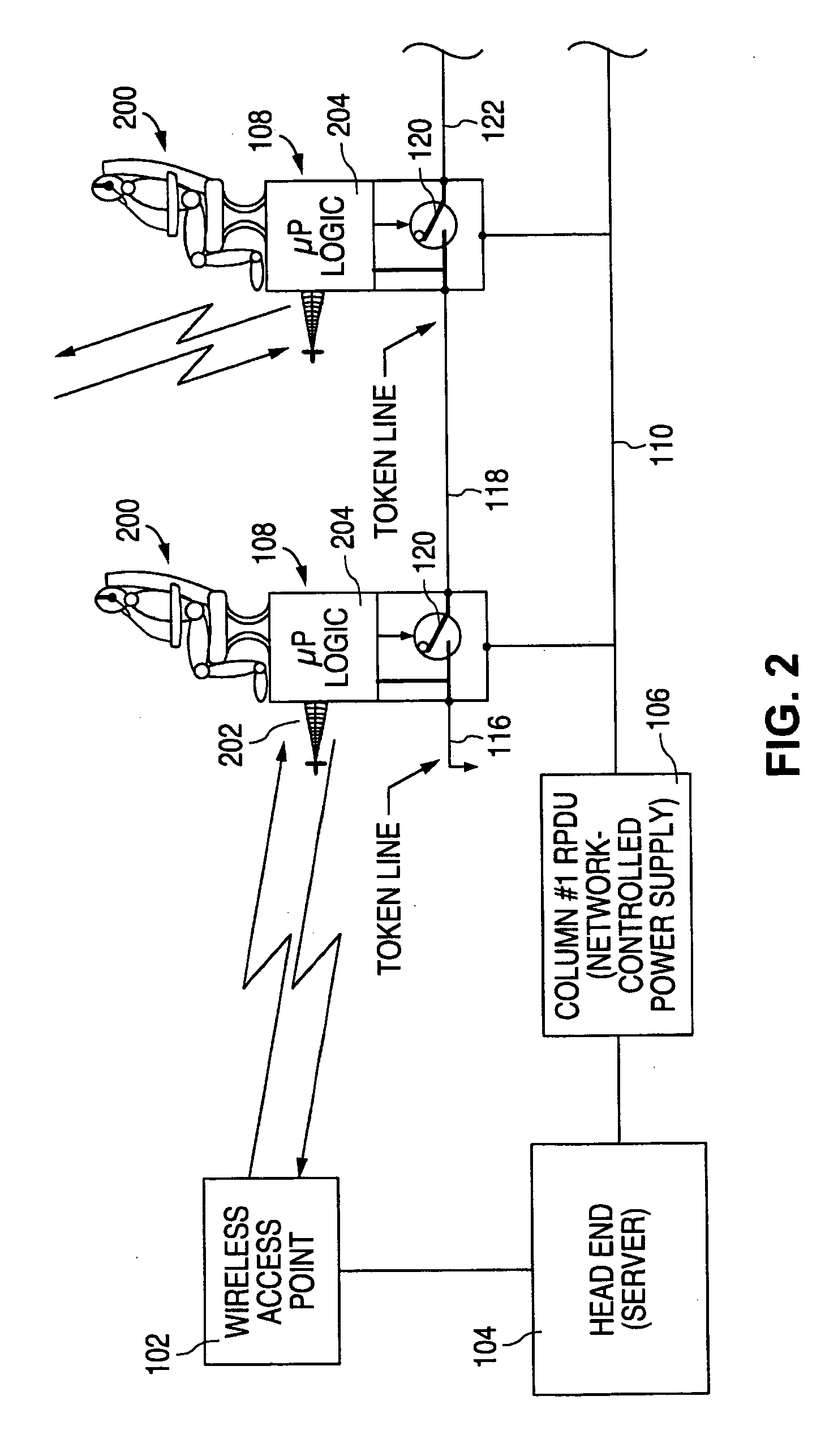Automatic airplane seat location mapping
- Summary
- Abstract
- Description
- Claims
- Application Information
AI Technical Summary
Benefits of technology
Problems solved by technology
Method used
Image
Examples
Embodiment Construction
[0016]FIG. 1 is a diagram showing a system 100 for identifying and mapping units in a wireless communication system according to one embodiment. In this example, the wireless communication system is in an airplane, with the wireless units associated with seats on the airplane. System 100 includes a base station or access point (AP) 102, a server 104, such as an In-Flight Entertainment (IFE) Head End, three network controlled power supplies, such as 7E7 Remote Power Distribution Units (RPDUs) 106, and three columns of wireless stations or units 108. Each wireless unit is associated with an individual seat. System 100 is shown with four wireless units 108 in the first column, three wireless units 108 in the second column, and four wireless units 108 in the third column. The number of columns and wireless units shown in FIG. 1 is for illustration only, as any suitable number of columns and wireless units can be used with the present invention.
[0017] Each plurality of wireless units in...
PUM
 Login to View More
Login to View More Abstract
Description
Claims
Application Information
 Login to View More
Login to View More - R&D
- Intellectual Property
- Life Sciences
- Materials
- Tech Scout
- Unparalleled Data Quality
- Higher Quality Content
- 60% Fewer Hallucinations
Browse by: Latest US Patents, China's latest patents, Technical Efficacy Thesaurus, Application Domain, Technology Topic, Popular Technical Reports.
© 2025 PatSnap. All rights reserved.Legal|Privacy policy|Modern Slavery Act Transparency Statement|Sitemap|About US| Contact US: help@patsnap.com



